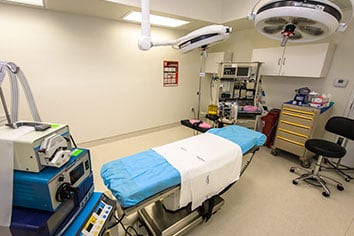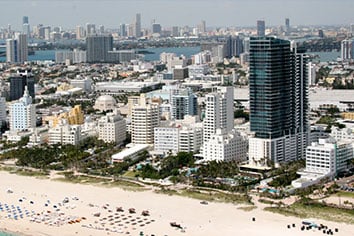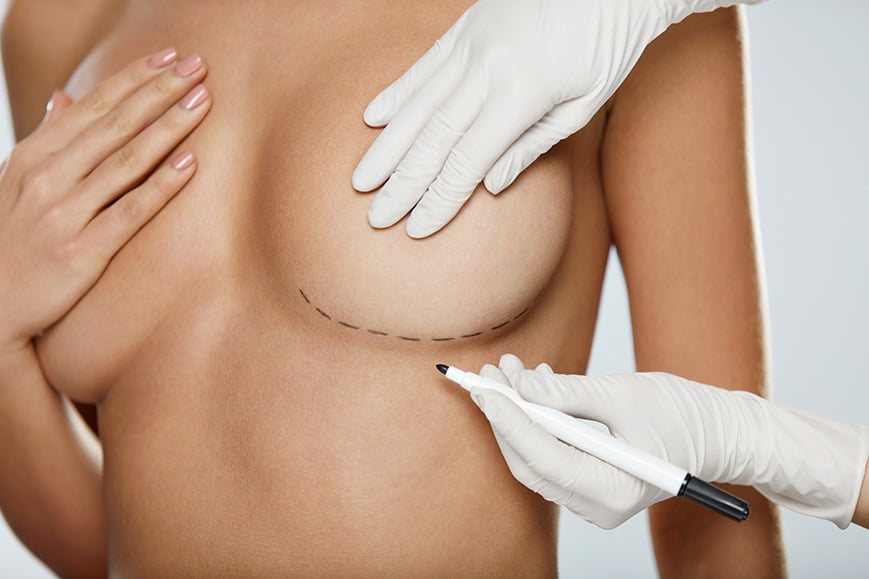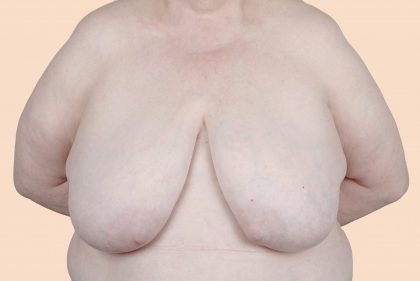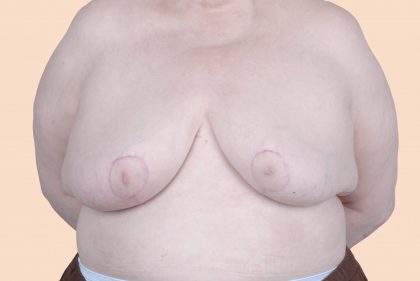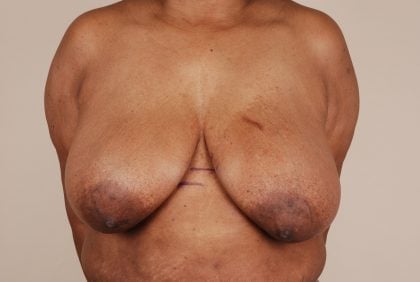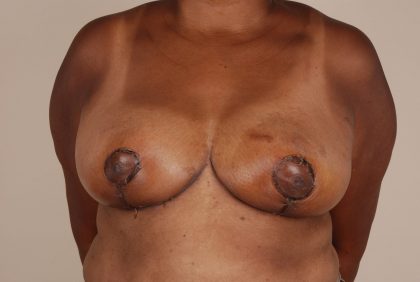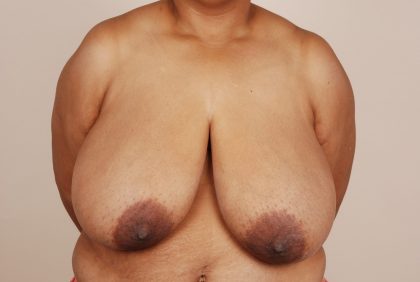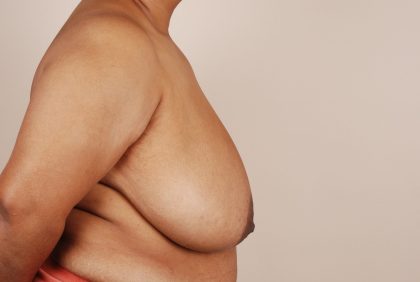Conveniently located to serve the areas of Miami and South Florida
Breast reduction is a surgical procedure that decreases the size and weight of overly large breasts. Specialized surgical techniques are used to remove excess fat, glandular tissue, and skin to correct sagging or droopy breasts. The surgery can also create a more aesthetically pleasing, lifted shape for the breasts, and reduce and reposition the areolas.
Every woman deserves to have breasts that she loves, and a breast reduction can help permanently alleviate the many uncomfortable symptoms that accompany large breasts.
According to a report conducted by the American Society of Plastic Surgeons, 33,574 breast reduction procedures were completed in 2020.(1)
If you’ve been suffering from pain caused by the size and weight of your breasts, breast reduction surgery is an effective solution. To learn more, schedule a personal consultation with Dr. Silvia Rotemberg. For over 30 years, Dr. Rotemberg has been helping women eliminate the source of their daily pain and self-esteem issues. Call (305) 274-5170 to get in touch with her Miami practice.
Contents
Before and After Photos
About Breast Hypertrophy
Women who struggle with breasts that are too large for their frame have a condition referred to as breast hypertrophy. In some cases, the growth can occur during puberty, but pregnancy, various medications, and autoimmune diseases can also trigger the growth of large breasts. It can be difficult to establish a distinct threshold for what constitutes breast hypertrophy, or “how big is too big” since women’s lifestyles, tastes, and anatomy vary so widely. For that reason, The American Society of Plastic Surgeons doesn’t believe a specific cup size or amount of breast tissue indicates the need for breast reduction surgery.(2) Instead, surgeons tend to assess the degrees of symptoms experienced by the patient before making specific recommendations. Dr. Rotemberg has honest conversations with each of her patients about how their breasts impact their life, and the severity of their symptoms. This step is important because every situation is different! Some patients are looking for just a small correction, while other patients seek drastic change.
Do I Need Breast Reduction Surgery?
While women pursue a breast reduction for a variety of reasons, the most common driving factor is physical discomfort. Lower back pain, shoulder pain, neck strain, chronic headaches, and frequent skin infections are common complaints, and significantly impact a woman’s quality of life. There are also those who seek out breast reduction for purely cosmetic reasons, but emotional discomfort is also a legitimate reason to want smaller breasts. Unwanted attention, embarrassment, and being unable to find clothes that fit can keep women from enjoying their femininity. Breast reduction surgery can put an end to all of these tiresome problems permanently, and let women continue their lives with confidence. This procedure also offers additional benefits:
- Perkier, more youthful-looking breasts
- Smaller, more proportionate areolas
- Ability to move and exercise more comfortably
- Better-fitting bras, swimsuits, and tops
To learn more about the other transformative procedures that Dr. Rotemberg performs, follow her blog!
Candidates
Generally speaking, healthy women are good candidates for breast reduction. If you are obese or smoke cigarettes, Dr. Rotemberg may not recommend this procedure. Similarly, if you’re planning to get pregnant or go on an intense diet or exercise program, Dr. Rotemberg will likely recommend waiting to undergo this surgery. Pregnancy often causes an increase in breast size, while intense exercise regimens may lead to a natural decrease in breast size. In both instances, Dr. Rotemberg doesn’t want these lifestyle changes to impact your results, or your surgery to keep you from making important life choices. High-priority candidates are those suffering from chronic back and shoulder pain, or related chronic skin conditions. But as previously mentioned, many recipients of breast reduction surgery are also women who want to improve the appearance of excessively large or sagging breasts or those who want to participate in sports or other activities more easily.(3) Women that are considering a breast reduction should be aware that many of the incision patterns used to reduce the size of the breasts will leave visible scars. However, since these are typically located below the nipple, any scarring will be concealed when clothed. To learn more about the benefits of this surgery and whether it’s right for you, call (305) 274-5170 to schedule a personal consultation, or fill out our convenient contact form.
Procedure
Common surgical techniques used during breast reduction surgery include liposuction, vertical breast reduction, and inverted-T breast reduction. Different cases require different techniques, and Dr. Rotemberg will assess your individual needs to devise the best treatment plan. If the size of your breasts is due to an excess of fatty tissue, and you have good skin elasticity, liposuction may be a suitable solution. Because liposuction is a minimally invasive procedure, this avoids noticeable scarring and offers the benefit of a faster recovery.
However, if your breasts are sagging or stretched, and you’ll need a good amount of skin and tissue removed in addition to breast fat, you may require a reduction mammaplasty surgery.
Breast Reduction Incision Patterns
If your particular case entails the removal of a small or moderate amount of tissue, a vertical incision pattern can be used. This approach involves two different incisions: one around the edge of the areola so that the size of the areola can be reduced and the areola can be moved to a higher position on the breast mound. This is accomplished by removing tissue from around the areola. Glandular tissue, fat, and skin are then removed from below the areola so that when the incision is sutured closed, patients are left with a vertical incision from the bottom of the areola to the crease beneath the breast, the inframammary crease. This option allows the surgeon to internally shape the breast and lift it upwards.
For larger breasts that require a significant amount of tissue removal, the inverted-T or anchor technique is more commonly used. This approach leaves a patient with three visible incision lines: one around the edge of the areola, one vertical incision from the areola to the breast crease, and one horizontal incision along the breast crease as well. The third incision allows for even more tissue to be removed, making it the best option for patients with asymmetry and/or sagging issues as well. In both cases, Dr. Rotemberg carefully removes tissue from underneath the skin, deftly navigating the blood vessels and nerves. The internal structuring of the breast varies from person to person, but plastic surgeons are able to expertly remove tissue without damaging the complicated circulatory and nerve systems running through the breast.
Recovery
Dr. Rotemberg recommends that a friend or family member drive you home from the clinic and help you out for at least 1-2 days following the procedure. You’ll be given a detailed list of instructions on how to care for your healing incisions and will return to Dr. Rotemberg’s office for follow-up appointments so that she can monitor your progress and address any concerns that you may have. In general, getting plenty of rest and eating a healthy diet will help ensure a speedy recovery process. It’s also recommended that you avoid taking aspirin and other blood thinners, and completely avoid nicotine until the healing process has run its course.(4) While light walking is recommended, you should avoid strenuous activity and lifting anything over 5 pounds for 4-6 weeks.
Results
After about 2-3 months, your breasts should be fully healed. In many cases, patients experience immediate neck and back relief after completion of the procedure. Once your breasts have healed, you’ll find a renewed sense of self-confidence, the ability to fit into shapely clothing, and the freedom to participate in all kinds of athletic activity.
How Much Does Breast Reduction Cost in Miami?
Dr. Rotemberg works with every patient to develop a treatment plan that suits their unique needs and anatomy. As a result, the cost of breast reduction surgery varies slightly from patient to patient. After your consultation with Dr. Rotemberg, we can give you an estimate on what you can expect to pay.
FAQ
What does breast reduction surgery do?
Breast reduction surgery removes a combination of excess breast fat, skin, and glandular tissue from the breasts.
Why do women get breast reduction surgery?
Some women may choose to undergo breast reduction surgery for medical purposes. Excess breast fat and tissue tends to cause a variety of problems. For one, the weight of heavy breasts can cause neck, back, and shoulder pain that tends to worsen over time. Frequent skin rashes and infections can also occur in the folds underneath breasts, where excessive friction and moisture occur. Some women may opt for breast reduction surgery for purely aesthetic purposes. It’s much more difficult for women with larger-than-average breasts to find stylish bras, swimsuits, and clothing. Intense physical activity can also be a challenge for women with overly-large breasts which can get in the way during sports and exercise.
References
- American Society of Plastic Surgeons. 2020 National Plastic Surgery Statistics.; 2021. https://www.plasticsurgery.org/documents/News/Statistics/2020/plastic-surgery-statistics-report-2020.pdf
- ASPS Recommended Insurance Coverage Criteria for Third-Party Payers: Reduction Mammaplasty. American Society of Plastic Surgeons. May 2011. www.plasticsurgery.org/Documents/shealth-Policy/Reimbursement/insurance-2017-reduction-mammaplasty.pdf
- Pedro Salomao Piccinini, MD. Breast Reduction: The Superolateral Dermoglandular Pedicle Revisited. Aesthetic Plastic Surgery Journal. 2007. www.academia.edu/40976214/Breast_Reduction_Tshe_Superolateral_Dermoglandular_Pedicle_Revisited
- Erin Larowe. Breast Reduction Post-Operative Instructions. University of Michigan health System. 2016. www.med.umich.edu/1libr/Surgery/PlasticSurgery/BreastReconstruction/BreastReductionpostop.pdf





